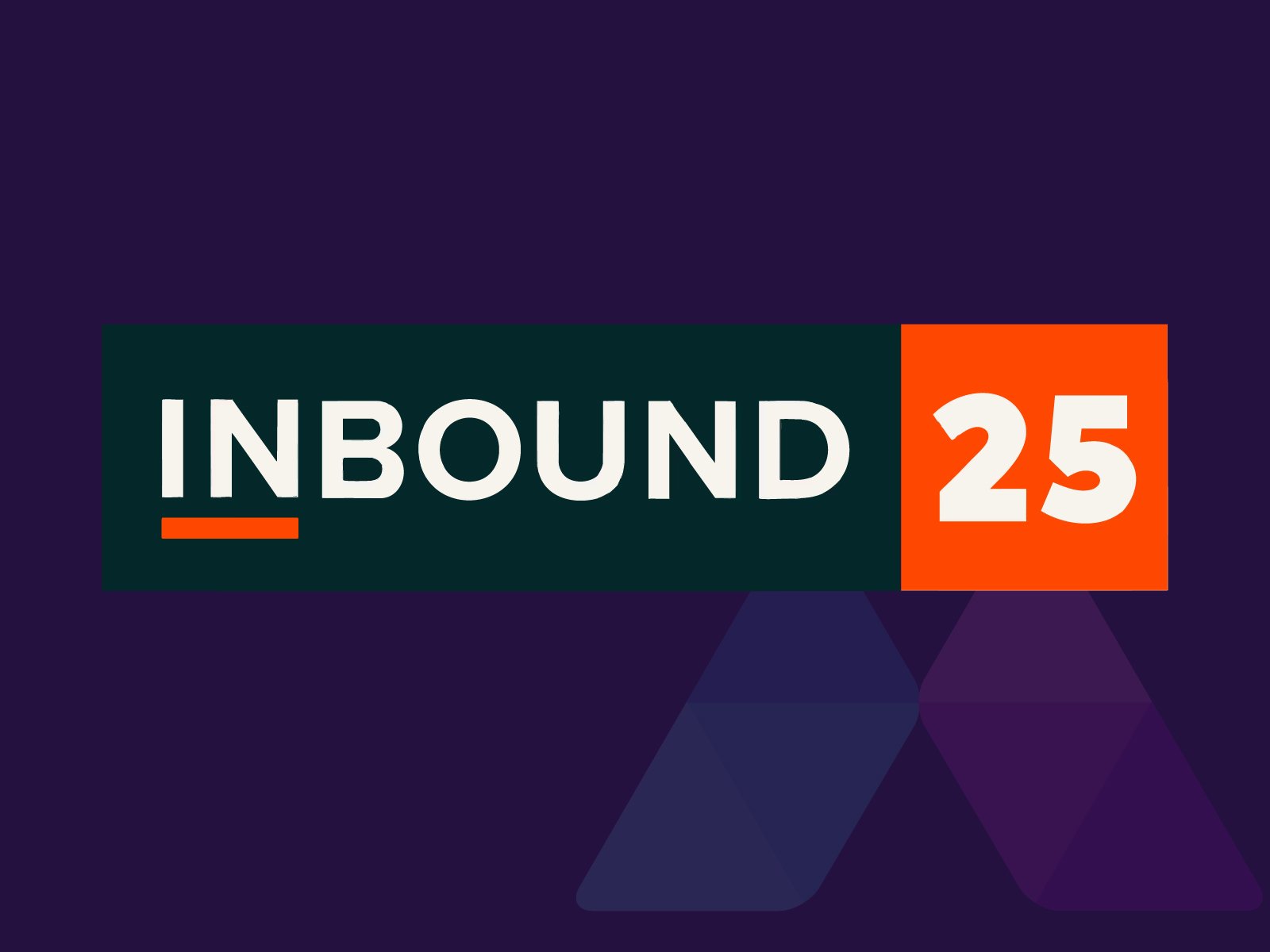Sales teams invest countless hours chasing down leads, making calls, and sending follow-up emails. But the frustrating reality is that too many of those valuable hours are spent pursuing leads that will never convert. That's a significant portion of your team's workday spent on prospects who aren't ready, or simply aren't right, for your service or product.
Lead scoring can transform how efficiently your team works by helping them focus on the right opportunities. And the benefits go beyond productivity – businesses with lead scoring processes in place see 77% higher lead-generation ROI than those that don't.1 Read on to learn everything you need to know about lead scoring, from the basics to advanced strategies that will help your teams work smarter.
What Is Lead Scoring?
Lead scoring is a methodology that helps marketing and sales teams determine how likely their leads are to make a purchase by assigning point values to various characteristics and behaviors. It transforms raw data into actionable insights to help businesses evaluate prospects based on their potential value and readiness to buy.
Rather than treating all leads equally, this approach lets you prioritize your outreach based on the lead scoring criteria that reflect your ideal customer profile and historical success patterns. The higher the score, the more likely a prospect is to convert into a customer.

Explicit Lead Scoring
Explicit lead scoring examines the concrete, measurable characteristics of your leads – the information prospects directly share with you through forms, surveys, and direct interactions. This forms the backbone of your scoring system and helps identify whether a prospect matches your ideal customer profile.
Explicit scoring factors include:
- Company Size and Annual Revenue: Understanding a prospect's company size and revenue helps determine if they have the budget and infrastructure to benefit from your solution. A startup with five employees likely has different needs and capabilities than an enterprise with 5,000 workers. Assigning appropriate scores based on this demographic data can help your sales reps quickly identify leads that align with your target market.
- Geographic Location: Location matters, especially in the B2B tech space. Whether you're focused on specific regions or looking to expand into new territories, geographic scoring helps prioritize leads based on your service area and market strategy. This becomes particularly important when considering factors like time zones, local regulations, and service capabilities.
- Industry Vertical: Different industries have different needs, challenges, and buying patterns. By scoring based on industry vertical, you can identify prospects in sectors where you have proven success or strategic growth opportunities. This also helps your team tailor their approach with industry-specific knowledge and solutions.
- Job Title and Decision-Making Authority: C-level executives, IT directors, and procurement managers typically have different levels of decision-making authority. Lead scoring systems should reflect these differences by giving a higher lead score to contacts who can actually sign off on purchases or strongly influence buying decisions.
- Current Technology Stack: Understanding a lead's current technology environment helps determine their compatibility with your solutions. This includes both technical compatibility and the potential for integration with existing systems. Higher scores might go to companies using complementary technologies or those showing signs of outgrowing their current solutions.
- Budget Availability: While sometimes challenging to determine early in the process, any indication of budget availability or purchasing timeframes should factor into your scoring. This might come from direct discussions, RFP processes, or indirect indicators like recent funding rounds or expansion announcements.
Implicit Lead Scoring
While explicit scoring gives you the facts, implicit scoring reveals the story behind them. This type of scoring focuses on prospect behavior – the digital footprints they leave as they interact with your brand across various touchpoints.
Implicit scoring factors can include:
- Website Engagement: Modern website analytics can tell you much more than just page views. Analyzing behavioral data like visit frequency, time on site, and specific page interactions can help you gauge a prospect's level of interest and intent. For example, multiple visits to your pricing page might indicate serious purchase consideration, while frequent blog visits might suggest someone is still in the research phase.
- Content Consumption: The types of content your prospects consume can reveal where they are in their buyer's journey. Someone downloading technical specifications or implementation guides might be closer to a purchase decision than someone reading basic educational blog posts. Your scoring should reflect these differences in content engagement.
- Email Interaction Metrics: Email engagement provides valuable insights into prospect interest levels. Opens, clicks, and forward rates can all contribute to a lead's score. Pay special attention to engagement patterns over time – consistent interaction often indicates sustained interest, while sporadic engagement might suggest casual curiosity.
- Social Media Engagement: Social media interactions offer unique insights into how prospects perceive and engage with your brand. Following your company pages, sharing your content, and interacting with your posts are all positive indicators that should factor into your lead scores.
- Event and Webinar Participation: Attending virtual or in-person events requires a time investment from prospects, which makes event participation a useful lead scoring criterion. Consider not just attendance but also factors like questions asked, interaction during sessions, and follow-up actions taken.
- Demo and Trial Requests: Direct requests for product demonstrations or trial access are often strong indicators of purchase intent. However, the context matters – was the request spontaneous after thorough research, or was it prompted by an aggressive promotional campaign? Your lead scoring should reflect these nuances.
What Are the Benefits of B2B Lead Scoring?
Before we get into the nitty-gritty, let's explore what makes lead scoring an essential tool for modern B2B tech companies:
Lower Marketing Costs, Higher Returns
Around 14% of marketers say creating content that generates leads is a challenge.2 Implementing a lead scoring system can help your marketing team identify which channels and campaigns consistently generate high-quality leads. They can then focus their marketing efforts on creating content that drives genuine results, resulting in smarter budgeting with higher returns.

Dramatic Improvements in Sales Efficiency
Lead scoring helps sales teams prioritize their efforts on the most promising prospects so they can close deals faster and maintain higher conversion rates. This efficiency boost often improves job satisfaction and reduces burnout among sales team members.
Better Sales and Marketing Alignment
Lead scoring helps create better alignment between your sales and marketing teams, which 25% of sales professionals say improves lead quality.3 Establishing clear, agreed-upon criteria for lead quality ensures both departments work from the same playbook. This alignment eliminates the common friction points between teams and creates a more collaborative revenue generation engine.
4 Steps To Creating an Effective Lead Scoring System
Creating an effective lead scoring system doesn't have to be overwhelming. Here are four steps to help you develop a process that works for your unique needs:
Step 1: Start With Your Ideal Customer Profile (ICP)
Before you dive into point values and scoring criteria, let's take a step back and paint a clear picture of your perfect customer. Your ICP guides everything from your marketing messages to your sales approach to form the foundation of your entire lead scoring process. Create your ICP by defining characteristics like:
- Target industries and company sizes that align with your solution
- Geographic locations where you have the strongest presence
- Common pain points and challenges your product addresses
- Decision-making processes typical in your target market
- Budget ranges that match your pricing structure
When you take the time to define these characteristics clearly, you're essentially creating a blueprint for success that will make your scoring system much more effective at identifying leads that aren't just able to buy, but are likely to become your biggest fans and longest-lasting customers.
Step 2: Put Your Historical Data To Use
Your existing customer base can offer plenty of insights just waiting to be discovered. Going through your historical data can help you uncover patterns that make your lead scoring more accurate. Be sure to:
- Analyze characteristics shared by your best customers
- Identify behaviors that preceded successful conversions
- Study patterns in deals that failed to close
- Track the typical length and complexity of your sales cycle
When you understand what made your best customers choose you, you can better identify similar prospects in your pipeline. This knowledge transforms those gut feelings into data-backed decisions for a more reliable lead scoring process.

Step 3: Determine Your Scoring Criteria
Setting up the framework for evaluating your lead scores essentially involves creating a checklist that helps you assess leads from both the outside in and the inside out – looking at who they are and how they behave. Consider including:
External criteria (demographic factors):
- Company size and revenue alignment
- Industry and market segment match
- Geographic location fit
- Technology stack compatibility
- Budget capacity indicators
Internal criteria (behavioral factors):
- Website engagement patterns
- Content download history
- Email interaction rates
- Social media engagement
- Sales team interaction quality
Establishing clear criteria in these two categories can give you a complete picture of each lead. External factors tell you if a prospect looks like your ideal customer on paper, while internal factors reveal if they're actually behaving like one. Together, these criteria create a solid foundation for lead scoring systems that go beyond surface-level evaluations to truly predict success.
Step 4: Create a Clear Point Structure
Now comes the fun part – turning all that knowledge into a practical scoring system. The key is to make it simple enough to understand but sophisticated enough to capture the nuances that really matter in your sales pipeline. This might include:
- Critical criteria (10-15 data points): Factors that strongly indicate purchase potential
- Important factors (5-9 data points): Elements that support but don't guarantee success
- Influencing elements (1-4 data points): Minor indicators that help refine the overall lead score
A well-structured point system brings clarity and consistency to your lead evaluation process. When everyone on your team understands why certain factors carry more weight than others, they can make better decisions about where to focus their energy. Don't forget to include negative scoring for characteristics that typically indicate poor fit – this helps quickly identify leads that aren't worth pursuing, saving your team valuable time and resources.

Lead Scoring Model Examples
While every business is unique, you don't have to start from scratch when designing your lead scoring model. Here are some popular lead scoring models to help you get started:
The Basic Matrix Model
The basic matrix model combines demographic fit (graded A-D) with behavioral engagement (scored 1-4) to create an easy-to-understand scoring system. For example, a perfect-fit company showing high engagement would be rated A1, while a poor-fit company with low engagement would be D4.
The simplicity of this model makes it perfect for businesses just starting their lead scoring efforts or those with shorter sales cycles. Plus, it's easy to explain to your team – no complex algorithms or fancy formulas required.
The Predictive Model
Take your lead scoring to the next level with the predictive model, which leverages AI and machine learning to identify patterns that might be invisible to the human eye. It's like having a digital detective that constantly analyzes your customer data to spot the subtle signs of a promising lead.
As your AI assistant learns from each new interaction, it gets better at predicting which leads are most likely to convert. The best part? Predictive scoring can identify seemingly random factors that correlate with success, such as the time of day someone visits your website or the specific combination of pages they view, to give you insights you might never have discovered otherwise.
The Decay Model
A lead that was hot last month might be lukewarm today and cold tomorrow. The decay model recognizes that lead interest can fade over time by automatically reducing lead scores if engagement drops off. For example, a lead score might decrease by 10% each week without engagement, ensuring you get a fresh, accurate picture of your pipeline.
The decay model is especially helpful for businesses with longer sales cycles, as factoring in time and engagement patterns can give you a more realistic view of your opportunities. Ultimately, this model aims to help prevent your sales team from chasing after uninterested prospects when they could be focusing on your best leads.
The Weighted Pipeline Model
The weighted pipeline model assigns different values to activities based on their position in the sales funnel, giving more weight to bottom-funnel actions that indicate higher purchase intent. After all, downloading a pricing sheet probably says more about buying intent than clicking through your blog posts.
Assigning higher scores to actions that historically lead to purchases creates a scoring system that naturally prioritizes the most promising opportunities. You can even adjust the weights over time as you learn more about which actions really indicate serious buying intent.
How Should You Score Leads?
Ready to get started? Here are a few best practices to help you build a scoring system that delivers reliable results for your business:
Unite Your Data Sources
The majority (84%) of sales reps communicate with a prospect on multiple channels,3 so consolidating all your valuable lead data in one place is a must. Think of this as gathering all the pieces of your lead scoring puzzle, from your CRM and marketing automation platform to your website analytics and social media insights. When you bring all these sources together, you'll start seeing patterns and connections you might have missed before.

Gather Cross-Functional Input
Start by bringing together your most valuable sources of insight – your sales team and customers. Your sales reps can tell you which interactions truly matter, from high-value pricing page visits to meaningful event participation. Meanwhile, your customers can provide invaluable feedback about what actually influenced their buying decisions. Consider interviewing customers with both short and long sales cycles to get a comprehensive view of different buying patterns.
Map Behavioral Signals
With so much of today's sales process happening online, creating a detailed lead scoring framework for online behaviors is a must. Focus on high-intent actions like:
- Multiple visits to pricing or product pages
- Technical documentation downloads
- Demo request submissions
- Specific content engagement patterns
- Email interaction frequency and depth
Remember to implement score degradation – reducing points over time for inactive leads. After all, a prospect who was highly engaged three months ago but has gone silent likely deserves a lower priority than someone actively engaging with your content today.
Use HubSpot Lead Scoring Software
Marketing tools like HubSpot's predictive lead scoring software make it easy to put your scoring on autopilot. This tool features customizable lead scoring criteria, real-time tracking, and seamless integration with your CRM, so you can focus on connecting with your qualified leads while HubSpot handles the scoring behind the scenes.
Monitor and Optimize
Keep an eye on how your lead scoring tool is performing, and don't be afraid to make adjustments along the way. Your business is constantly evolving, and your lead scoring models should evolve with it. Regular check-ins with your sales team and a close look at your conversion data will help you spot opportunities to make your scoring even more effective.
Master Your Lead Scoring Model With Mojenta
Let's face it: not all leads are created equal. Luckily, the right lead scoring systems can empower your employees to focus their energy where it matters most, resulting in improved efficiency and higher conversion rates.
As a HubSpot Platinum Partner who has worked with over 300 B2B telecom, IT, and cloud companies in our 14-year history, we've seen firsthand how the right lead scoring strategy can transform a "just okay" sales pipeline into a high-performing revenue engine. Our HubSpot Onboarding and Management services ensure your HubSpot is properly set up so you can:
- Align your sales and marketing teams
- Identify which leads actually deserve your attention
- Automate key processes to achieve more
- Create predictability with data-driven insights
Book a consult today to learn more about how we can help you build a lead scoring system that doesn't just work – it works for you.
Sources:




